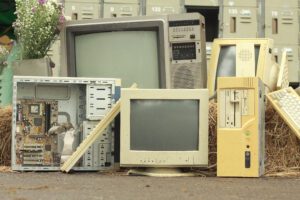When we think about technology, especially in recent decades, we tend to refer to something very futuristic—objects that are truly advanced, fast, and capable of correctly interpreting all the needs of “real” people and users who populate the web.
Regarding this topic, however, we cannot forget that some objects from the past, which now seem old, once represented significant technological advancements.
This is why we talk about obsolete technology, which refers to technology that was once high-performing but now seems almost anachronistic compared to the needs of the population. In a world where the rapid pace of technological innovation is essential for maintaining competitiveness in any field, adopting and maintaining up-to-date technological infrastructure is crucial for companies, private citizens, and any type of public entity. Therefore, obsolete technology could pose a concrete risk to future innovation. Or perhaps not?
Reduced productivity
Every technology has its own timeline for information processing and storage. When we encounter obsolete technology, we may experience delays in completing work tasks. This is especially true for small and medium-sized enterprises, which risk losing significant revenue due to outdated technologies.
Increased downtime
In this sense, old technology can cause more hardware and software issues, leading to longer downtimes and frequent operational interruptions. For a company, it is highly essential to update technological systems to avoid constant disruptions in work activities.
Security risks
Naturally, as technology ages, it becomes more vulnerable to malfunctions or cyberattacks. This understandably leads to financial risks associated with the poor performance of obsolete technology.
Update problems
Among other things, obsolete technology can cause both bureaucratic and practical problems concerning permissions, certifications, regulatory requirements, and functionality. This is due to the lack of patches and updates needed to improve the software necessary for specific tasks. Technology updates are almost fundamental for decent functionality, whether it’s a specific website, an application, a browser, casino online games or a console video game. Without the right updates, it will be impossible to make technology competitive.
General dissatisfaction
The ultimate consequence of all this is that even employees may become dissatisfied due to the inability to perform work tasks as easily and quickly as possible. An inadequate work environment can therefore create very serious problems for a company.
All necessary solutions
But what solutions can be implemented to help companies and infrastructures in the quest for better technology? One main piece of advice is to develop a vision for technological assets to better align all present technology life cycles. At the same time, it will also be necessary to standardize and simplify all practices in this regard to reduce the risk of information fragmentation.
A consistently excellent and functional strategy is, of course, cost optimization. By doing so, both internal and external services will simultaneously improve. Moreover, understanding the sustainability benefits of managing each technology’s life cycle can be crucial, contributing to both waste reduction and improved efficiency of the technologies in use.
Especially in the workplace, improving obsolete technology is absolutely necessary. This necessity extends beyond mere convenience—it is essential for ensuring employee safety and well-being, as well as maintaining high levels of productivity. Outdated technology can hinder workers’ ability to perform their tasks efficiently, leading to frustration, stress, and even burnout. In contrast, modern, efficient technology can streamline workflows, reduce the likelihood of errors, and create a more satisfying work environment.
Furthermore, the market is constantly evolving at a rapid pace. Technological advancements emerge regularly, setting new standards for what is possible in terms of speed, efficiency, and functionality. Companies that fail to keep up with these advancements risk falling behind their competitors. In today’s highly competitive work world, being able to face challenges with up-to-date technology is practically a duty. It is not just about staying relevant; it is about leveraging the best tools available to drive innovation, improve service delivery, and enhance overall business performance.
Moreover, investing in current technology reflects a company’s commitment to its workforce and its customers. It signals a forward-thinking approach and a willingness to adapt to new trends and demands. This proactive stance can lead to improved employee morale, as staff feel valued and supported by their employer’s investment in cutting-edge tools and resources. For customers, it means better service, faster response times, and more reliable products or services. Therefore, keeping technology up to date is not only fair but also a strategic imperative that can lead to long-term success and sustainability in the ever-changing market landscape.

























